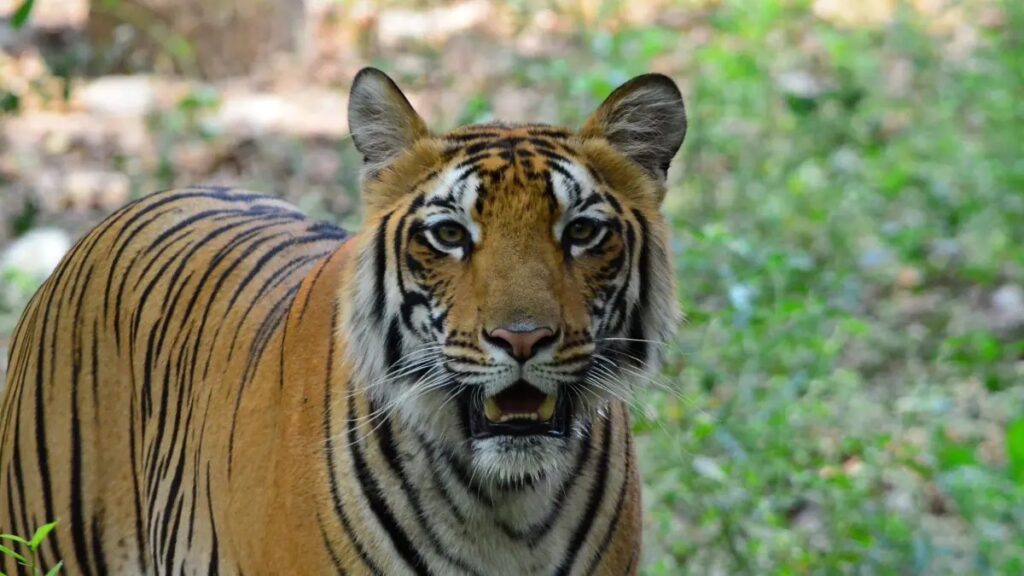
Three tigers and seven tigresses were photographed last year, said the report released on Tuesday; in 2017, this reserve had four tigers and just one tigress
The number of tigers is on the rise in Chhattisgarh’s Achanakmar Tiger Reserve, with 10 resident big cats photographed in 2024 compared to five in 2017, a new report by World Wildlife Fund India and the state forest department has revealed.
The reserve now has multiple breeding-age tigers with a a healthy sex ratio for the first time in 15 years, , said the report released on Tuesday.
Three tigers and seven tigresses were photographed last year. In 2017, the reserve had four tigers and just one tigress, it noted.
“Conditions appear to be ripe for the population to grow steadily,” it said.
“The population status and trend of tigers and prey in ATR (Achanakmar Tiger Reserve) were assessed using camera trap data from the 2017 to 2024, and line transect data from 2019 and 2024. There is evidence for progressive recovery of the tiger population over this period, with 10 resident tigers being photo-captured in 2024, relative to 5 in 2017,” the report said.
‘Line transect data’ here refers to a technique that involves walking or moving along a line to count the animals.
More prey available too
The population density of the tigers’ prey, the wild ungulate, has also shown an upward trend between 2019 and 2024, according to the analysis.
“Ungulate densities were highest in the Achanakmar and Chhaparwa ranges, which coincide with areas that have been constantly used by multiple tigers over the study period. Conversely, other ranges like Lamni and Surahi were associated with lower prey densities and tiger presence, suggesting potential for future recovery efforts,” the report said.
Radio collars and other recommendations
WWF India has recommended radio-collaring of tigers as per existing protocol and gain insights about the foraging ecology and habitat use. Focus should be on breeding females and dispersal-age animals, it said.
“The tiger reserve and corridors comprise large areas recognised as Community Forest Resources Rights (CFRR) under the FRA, 2006. The Forest Department, NGOs, and community institutes in key villages must collaborate to promote conservation through co-management of these areas,” the report recommended.
It emphasised the crucial role of the Kanha-Achanakmar and Bandhavgarh-Achanakmar corridors in enabling tiger population recovery in the area. It further stressed the need for sustained and adaptive management practices, effective protection measures, and active community participation in conservation.
Move to restore habitat
In a separate event, on the occasion of Global Tiger Day, Union environment minister Bhupender Yadav announced the launch of a nationwide tree plantation drive, where over 1 lakh saplings will be planted across all 58 tiger reserves.
As part of this initiative, authorities of each tiger reserve are to plant 2,000 saplings of indigenous plant species in degraded areas to promote habitat restoration.
The event included the inauguration of forest nurseries at three locations in the Aravalli landscape.




